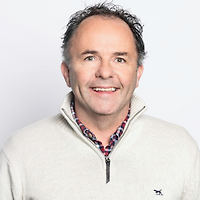Central Lakes, Dunedin - South Otago, Southland > Private Hospitals & Specialists >
Pacific Radiology - Otago and Southland
Private Service, Radiology, Pregnancy Ultrasound
Description
| X-ray | US | Pregnancy US | MRI | CT | Breast Imaging | Bone Density | Interventional Services | |
| ● | ● | ● | ||||||
| Cromwell | ● | ● | ● | |||||
| Dunedin - Bond Street | ● | ● | ||||||
| Dunedin - BreastScreen Otago Southland | ● | |||||||
| Dunedin - Great King Street | ● | ● | ● | |||||
| Dunedin - Marinoto | ● | ● | ● | ● | ● | ● | ● | ● |
| Gore | ● | |||||||
| Invercargill | ● | ● | ● | ● | ● | ● | ● | ● |
| Invercargill - BreastScreen Otago Southland | ● | |||||||
| Mobile Breast Screening Clinic | ● | |||||||
| Queenstown - Isle Street | ● | ● | ● | |||||
| Queenstown - Kawarau Park | ● | ● | ● | ● | ● | ● | ● | |
| Wanaka | ● | ● | ● |
All sites are fully digital (filmless) and linked in a national PACS network across Pacific Radiology Group across NZ.
Pacific Radiology provides publicly funded examinations under contracts with the Southern District Health Board and Hospital Trusts at Gore Hospital and Balclutha Hospital (Clutha Health First). We also provide offsite reporting services to Ōamaru and Dunstan Hospitals.
Pacific Radiology perform examinations for ACC and under the Maternity Benefit Scheme. These examinations are part funded only. Most patients will pay a small surcharge.
Consultants
-

Dr Jacqueline Copland
Radiologist
-

Dr Bruno De Carvalho
Radiologist
-

Dr Amy Fong
Radiologist
-

Dr James Fulton
Radiologist
-

Dr Gregory Harkness
Managing Radiologist
-

Dr Gabriel Lau
Radiologist
-

Dr James Letts
Radiologist
-

Dr Michael McKewen
Radiologist
-

Dr Grant Meikle
Radiologist
-

Dr Josie Parker
Radiologist
-

Dr Sophie Parker
Radiologist
-

Dr Andre Poon
Radiologist
-

Dr Michael Reddy
Radiologist
-

Dr Cameron Simmers
Radiologist
-

Dr Penny Thomson
Radiologist
Ages
Child / Tamariki, Youth / Rangatahi, Adult / Pakeke, Older adult / Kaumātua
How do I access this service?
Make an appointment, Referral
Referral Expectations
For a general X-ray examination, patients may come to our rooms and have the examination if they arrive between the hours of 9am-5pm. All other examinations require an appointment.
Fees and Charges Categorisation
Fees apply
Fees and Charges Description
Pacific Radiology is an affiliated provider with Southern Cross Health Insurance.
Click here for information about payments.
Hours
FOR SPECIAL HOLIDAY HOURS (PUBLIC HOLIDAYS & CHRISTMAS HOURS), PLEASE CHECK HERE: https://pacificradiology.com/campaigns/public-holiday
Mobile Breast Screening Clinic
FOR SPECIAL HOLIDAY HOURS (PUBLIC HOLIDAYS & CHRISTMAS HOURS), PLEASE CHECK HERE: https://pacificradiology.com/campaigns/public-holiday
Procedures / Treatments
An X-ray is a high frequency, high energy wave form. It cannot be seen with the naked eye, but can be picked up on photographic film. Although you may think of an X-ray as a picture of bones, a trained observer can also see air spaces, like the lungs (which look black) and fluid (which looks white, but not as white as bones).
An X-ray is a high frequency, high energy wave form. It cannot be seen with the naked eye, but can be picked up on photographic film. Although you may think of an X-ray as a picture of bones, a trained observer can also see air spaces, like the lungs (which look black) and fluid (which looks white, but not as white as bones).
With CT we can differentiate many more things than with a normal X-ray. A CT image is created by using an X-ray beam that rotates around your body. The information is processed in a computer to produce an image. This allows cross-sectional images of the body without cutting it open. The CT can be used to view the any part of the body. What to expect? You will have all metal objects removed from your body. You will lie down on a narrow padded moveable table that will be slid into the scanner, through a circular opening. You will feel nothing while the scan is in progress, but some people can feel slightly claustrophobic or closed in, whilst inside the scanner. You will be asked to remain still and hold your breath on command. There are staff present, but they will not necessarily remain in the room, but will speak with you via an intercom system and will be viewing the procedure constantly through a windowed control room, from where they will run the scanner. Some procedures will require Contrast Medium. Contrast medium is a substance that makes the image of the CT or MRI clearer. Contrast medium can be given by mouth, rectally, or by injection into the bloodstream. The scan time will vary depending on the type of examination required, but as a rule it will take around 30 minutes.
With CT we can differentiate many more things than with a normal X-ray. A CT image is created by using an X-ray beam that rotates around your body. The information is processed in a computer to produce an image. This allows cross-sectional images of the body without cutting it open. The CT can be used to view the any part of the body. What to expect? You will have all metal objects removed from your body. You will lie down on a narrow padded moveable table that will be slid into the scanner, through a circular opening. You will feel nothing while the scan is in progress, but some people can feel slightly claustrophobic or closed in, whilst inside the scanner. You will be asked to remain still and hold your breath on command. There are staff present, but they will not necessarily remain in the room, but will speak with you via an intercom system and will be viewing the procedure constantly through a windowed control room, from where they will run the scanner. Some procedures will require Contrast Medium. Contrast medium is a substance that makes the image of the CT or MRI clearer. Contrast medium can be given by mouth, rectally, or by injection into the bloodstream. The scan time will vary depending on the type of examination required, but as a rule it will take around 30 minutes.
The MRI procedure uses a combination of magnetic fields and radio waves to produce an image. This method delivers clear images without exposure to Xrays. It looks at the body in a different way to a CT. What to expect? Because you lie in a powerful magnet wewill go through a check list with you to ensure that no metal that may be attracted to it is introduced. You will lie down on a narrow padded moveable table that will be slid into the scanner, through a circular opening. You will feel nothing while the scan is in progress, but some people can feel slightly claustrophobic or closed in, whilst inside the scanner. The procedure can be noisy but you have earphones to listen to music - you can bring a favorite CD with you if you wishYou will be asked to remain still and hold your breath on command. There are staff present, but they will not necessarily remain in the room, but will speak with you via an intercom system and will be viewing the procedure constantly through a windowed control room, from where they will run the scanner. Some procedures will require an injection of Contrast Medium. Contrast medium is a substance that makes the image of the CT or MRI clearer. The scan time will vary depending on the type of examination required, but as a rule it will take around 30-45 minutes.
The MRI procedure uses a combination of magnetic fields and radio waves to produce an image. This method delivers clear images without exposure to Xrays. It looks at the body in a different way to a CT. What to expect? Because you lie in a powerful magnet wewill go through a check list with you to ensure that no metal that may be attracted to it is introduced. You will lie down on a narrow padded moveable table that will be slid into the scanner, through a circular opening. You will feel nothing while the scan is in progress, but some people can feel slightly claustrophobic or closed in, whilst inside the scanner. The procedure can be noisy but you have earphones to listen to music - you can bring a favorite CD with you if you wishYou will be asked to remain still and hold your breath on command. There are staff present, but they will not necessarily remain in the room, but will speak with you via an intercom system and will be viewing the procedure constantly through a windowed control room, from where they will run the scanner. Some procedures will require an injection of Contrast Medium. Contrast medium is a substance that makes the image of the CT or MRI clearer. The scan time will vary depending on the type of examination required, but as a rule it will take around 30-45 minutes.
In ultrasound, a beam of sound at a very high frequency (that cannot be heard) is sent into the body from a small vibrating crystal in a hand-held scanner head. When the beam meets a surface between tissues of different density, echoes of the sound beam are sent back into the scanner head. The time between sending the sound and receiving the echo back is fed into a computer, which in turn creates an image that is projected on a television screen. Ultrasound is a very safe type of imaging; this is why it is so widely used during pregnancy. Ultrasound is used for examinations of the: abdomen; aorta (main blood vessel carrying blood out of the heart); breast; female pelvis; musclesand tendons; salivary glands; testis; thyroid; urinary tract; arteries and veins and groin (for hernias). It can also be used for fine needle aspiration, investigation of a foreign body, prostate biopsy, pregnancy and hysterosonogram. What to expect? After lying down, the area to be examined will be exposed. Generally a contact gel will be used between the scanner head and skin. The scanner head is then pressed against your skin and moved around and over the area to be examined. At the same time the internal images will appear onto a screen.
In ultrasound, a beam of sound at a very high frequency (that cannot be heard) is sent into the body from a small vibrating crystal in a hand-held scanner head. When the beam meets a surface between tissues of different density, echoes of the sound beam are sent back into the scanner head. The time between sending the sound and receiving the echo back is fed into a computer, which in turn creates an image that is projected on a television screen. Ultrasound is a very safe type of imaging; this is why it is so widely used during pregnancy. Ultrasound is used for examinations of the: abdomen; aorta (main blood vessel carrying blood out of the heart); breast; female pelvis; musclesand tendons; salivary glands; testis; thyroid; urinary tract; arteries and veins and groin (for hernias). It can also be used for fine needle aspiration, investigation of a foreign body, prostate biopsy, pregnancy and hysterosonogram. What to expect? After lying down, the area to be examined will be exposed. Generally a contact gel will be used between the scanner head and skin. The scanner head is then pressed against your skin and moved around and over the area to be examined. At the same time the internal images will appear onto a screen.
After lying down, the area to be examined will be exposed. Generally a contact gel will be used between the scanner head and skin. The scanner head is then pressed against your skin and moved around and over the area to be examined. At the same time the internal images will appear onto a screen.
A barium enema is an X-ray procedure to examine the lower part of the gastro-intestinal tract (large bowel). Barium is a thick white chalky fluid that shows up on an X-ray. Barium moves quickly through the gastrointestinal tract and is not absorbed by the body. This procedure allows a clear picture of the outline of the bowel and shows up any abnormalities. The test takes around 1 1/2 hours. What to expect? A barium enema requires special preparation and it is important to carry out the instructions you are given, otherwise the procedure may not be carried out or give good enough results. The bowel must be clean and clear of faeces before the examination. Dietary instructions need to be followed, such as having clear fluids, then a prescriptive laxative must be taken and lastly enemas to clear out any remaining faeces. This examination is not a comfortable one; most people have a feeling of fullness of the bowel during the procedure, lower abdominal cramping and the urge to pass wind or a bowel motion. During the procedure, you will lie on your side upon an X-ray table. A well-lubricated tube is then gently inserted into the rectum. Barium and air then fills the colon. Air helps to keep a good flow of barium around the colon. You will then be asked to move into a number of different positions, to ensure that the barium coats all the surfaces of the bowel, to get a good picture. X-rays will then be taken while you hold your breath and keep still.
A barium enema is an X-ray procedure to examine the lower part of the gastro-intestinal tract (large bowel). Barium is a thick white chalky fluid that shows up on an X-ray. Barium moves quickly through the gastrointestinal tract and is not absorbed by the body. This procedure allows a clear picture of the outline of the bowel and shows up any abnormalities. The test takes around 1 1/2 hours. What to expect? A barium enema requires special preparation and it is important to carry out the instructions you are given, otherwise the procedure may not be carried out or give good enough results. The bowel must be clean and clear of faeces before the examination. Dietary instructions need to be followed, such as having clear fluids, then a prescriptive laxative must be taken and lastly enemas to clear out any remaining faeces. This examination is not a comfortable one; most people have a feeling of fullness of the bowel during the procedure, lower abdominal cramping and the urge to pass wind or a bowel motion. During the procedure, you will lie on your side upon an X-ray table. A well-lubricated tube is then gently inserted into the rectum. Barium and air then fills the colon. Air helps to keep a good flow of barium around the colon. You will then be asked to move into a number of different positions, to ensure that the barium coats all the surfaces of the bowel, to get a good picture. X-rays will then be taken while you hold your breath and keep still.
A mammogram is just an X-ray of the breast. Mammography can be used either to look for very early breast cancer in women without breast symptoms (screening) or to examine women who do have breast symptoms (diagnostic). What to expect? You will need to undress from the waist up. One of your breasts will be positioned between two plastic plates which will flatten the breast slightly. Most women find that this is a bit uncomfortable, but not painful. Generally two X-rays are taken of each breast. It is also useful to compare the results with earlier examinations and you should take any previous mammography results with you.
A mammogram is just an X-ray of the breast. Mammography can be used either to look for very early breast cancer in women without breast symptoms (screening) or to examine women who do have breast symptoms (diagnostic). What to expect? You will need to undress from the waist up. One of your breasts will be positioned between two plastic plates which will flatten the breast slightly. Most women find that this is a bit uncomfortable, but not painful. Generally two X-rays are taken of each breast. It is also useful to compare the results with earlier examinations and you should take any previous mammography results with you.
DEXA (which stands for dual energy x-ray absorptiometry) scanning uses X-rays in very small doses to measure the density of your bones. The density of your bones will show how strong they are. Your exposure to x-rays is very low and is similar to what you would receive on a long distance plane flight. What to expect? It is most convenient if you wear loose clothing with no metal domes or other attachments from chest to knee. A tracksuit is ideal. You will lie very still on a padded table for 5-10 minutes while the arm of the machine passes over the lower spine and hip. You will feel nothing.
DEXA (which stands for dual energy x-ray absorptiometry) scanning uses X-rays in very small doses to measure the density of your bones. The density of your bones will show how strong they are. Your exposure to x-rays is very low and is similar to what you would receive on a long distance plane flight. What to expect? It is most convenient if you wear loose clothing with no metal domes or other attachments from chest to knee. A tracksuit is ideal. You will lie very still on a padded table for 5-10 minutes while the arm of the machine passes over the lower spine and hip. You will feel nothing.
In ultrasound, a beam of sound at a very high frequency (that cannot be heard) is sent into the body from a small vibrating crystal in a hand-held scanner head. When the beam meets a surface between tissues of different density, echoes of the sound beam are sent back into the scanner head. The time between sending the sound and receiving the echo back is fed into a computer, which in turn creates an image that is projected on a television screen. Ultrasound is a very safe type of imaging. Ultrasound is the preferred investigation for tears and inflammation of the soft tissues around the shoulder which can lead to pain and or reduced function. At Pacific Radiology, Otago and southland we assess the scan along with Xrays of the shoulder. If you have not had those at Pacific Radiology, Otago and Southland recently they can be done when you come for your scan. Preparing for your ultrasound No preparation is necessary. Please don’t forget to bring your request form with you if you have it. If the examination is part subsidised by the ACC, please bring your ACC form that you received at the time of your injury so we can check the claim number. You should allow to be with us for at least one hour. Precautions Your arm is moved into different positions to demonstrate the shoulder structures. The operator will be gentle but let them know if any manipulation is painful. What to expect? You are scanned sitting in a chair. The radiologist or sonographer will spread a waterbased jelly on your skin over the shoulder. The ultrasound probe is then placed on the jelly, which is a sound conductor, to obtain the pictures. You will be completely unaware of the sound waves produced by the probe. There is no discomfort during the examination. Your results All the images are assessed by the radiologist after the examination and a report is dictated. This is sent to your referrer with copies to any other health professional if asked for on the request form.
In ultrasound, a beam of sound at a very high frequency (that cannot be heard) is sent into the body from a small vibrating crystal in a hand-held scanner head. When the beam meets a surface between tissues of different density, echoes of the sound beam are sent back into the scanner head. The time between sending the sound and receiving the echo back is fed into a computer, which in turn creates an image that is projected on a television screen. Ultrasound is a very safe type of imaging. Ultrasound is the preferred investigation for tears and inflammation of the soft tissues around the shoulder which can lead to pain and or reduced function. At Pacific Radiology, Otago and southland we assess the scan along with Xrays of the shoulder. If you have not had those at Pacific Radiology, Otago and Southland recently they can be done when you come for your scan. Preparing for your ultrasound No preparation is necessary. Please don’t forget to bring your request form with you if you have it. If the examination is part subsidised by the ACC, please bring your ACC form that you received at the time of your injury so we can check the claim number. You should allow to be with us for at least one hour. Precautions Your arm is moved into different positions to demonstrate the shoulder structures. The operator will be gentle but let them know if any manipulation is painful. What to expect? You are scanned sitting in a chair. The radiologist or sonographer will spread a waterbased jelly on your skin over the shoulder. The ultrasound probe is then placed on the jelly, which is a sound conductor, to obtain the pictures. You will be completely unaware of the sound waves produced by the probe. There is no discomfort during the examination. Your results All the images are assessed by the radiologist after the examination and a report is dictated. This is sent to your referrer with copies to any other health professional if asked for on the request form.
Precautions
Refreshments
There is a coffee bar for snacks and light lunches adjacent to our rooms in the Marinoto Clinic.
Pharmacy
Website
Contact Details
Mobile Breast Screening Clinic
Dunedin - South Otago
-
Phone
0800 270 200
Healthlink EDI
otagorad
Website
Our mobile breast screening unit regularly travels around the Southland / Otago regions. Click here to view our schedule to find out when it will be near you.
Main Branch is at:
Marinoto Clinic (attached to Mercy Hospital)
72 Newington Avenue
Maori Hill
Dunedin
Street Address
Main Branch is at:
Marinoto Clinic (attached to Mercy Hospital)
72 Newington Avenue
Māori Hill
Dunedin
Clutha Health First, Balclutha
Dunedin - South Otago
-
Phone
03 419 0430
Healthlink EDI
otagorad
Email
Website
Cromwell Medical Centre, 192 Waenga Drive, Cromwell
Central Lakes
-
Phone
03 443 0700
Healthlink EDI
otagorad
Website
7 Bond Street, Dunedin
Dunedin - South Otago
-
Phone
0800 505 909
Healthlink EDI
otagorad
Email
Website
Dunedin Hospital
Dunedin - South Otago
-
Phone
(03) 470 9809
Healthlink EDI
otagorad
Website
160 Great King St, Dunedin
Dunedin - South Otago
-
Phone
0800 505 909
Healthlink EDI
otagorad
Email
Website
Marinoto Clinic, 72 Newington Ave, Dunedin
Dunedin - South Otago
-
Phone
03 467 6687
Healthlink EDI
otagorad
Email
Website
2-10 Dee Street, Invercargill
Southland
-
Phone
03 218 3593
Healthlink EDI
otagorad
Email
Website
Southland Hospital, Invercargill
Southland
-
Phone
(03) 214 5790
Healthlink EDI
otagorad
Website
9 Isle Street, Queenstown
Central Lakes
-
Phone
03 441 3700
Healthlink EDI
otagorad
Email
Website
24 Eleventh Avenue, Kawarau Park, Queenstown
Central Lakes
-
Phone
(03) 441 3700
Healthlink EDI
otagorad
Email
Website
Wanaka Lakes Health Centre, 23 Cardrona Valley Road, Wanaka
Central Lakes
-
Phone
03 443 0700
Healthlink EDI
otagorad
Email
Website
Was this page helpful?
This page was last updated at 3:04PM on December 17, 2024. This information is reviewed and edited by Pacific Radiology - Otago and Southland.
